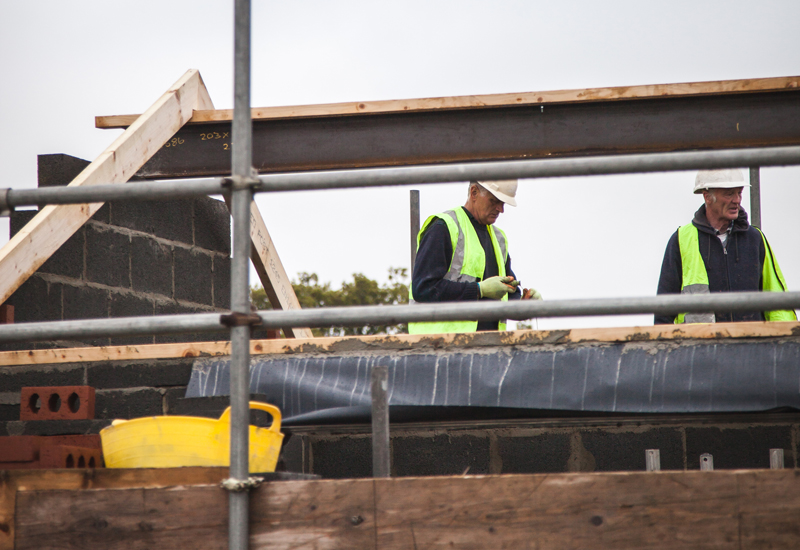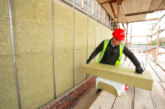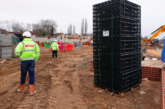
Chancellor George Osbourne’s Spending Review confirmed a desire to build 400,000 homes by the end of the decade.
With housebuilding enjoying centre stage in the reent Autumn statement a number of industry bodies have sharing their thoughts on the various plans to encourage housebuilding in the UK.
Julia Evans, BSRIA Chief Executive, said: “It is heartening that the Chancellor is ranking housebuilding high on a national scale, even if some of this is imprecise and difficult to quantify. The key issue is the execution of such schemes. BSRIA understands that a blueprint for 400,000 new homes has been unveiled. First-time buyers aged under 40 are to be offered a 20 per cent discount on new homes to help them onto the housing ladder. And a string of new measures to bolster the ability of private developers to construct affordable houses will be at the centre of a ‘bold plan’ to back families who aspire to buy their own home.
“BSRIA is encouraged that Ministers are to change planning rules to release land specifically for developing starter homes. And developers are to be offered cash from the government to construct starter homes and regenerate ‘brownfield’ land. The Chancellor has pledged 135,000 new ‘shared ownership’ homes where buyers will be able to buy an initial stake in a new property and increase their share over time if they can afford to do so. This equates to £4bn being pumped into the scheme to provide properties for households earning less than £80,000 (or £90,000 in London). BSRIA welcomes the announcement by Treasury officials that the package represents ‘the largest programme of affordable housebuilding by a government since at least 1979 and the biggest ever programme of government building of homes for sale. Now all he has to do is deliver it.”
Owen Goodhead, managing director of specialist recruiter Randstad CPE, comments:“From an industry standpoint, questions still surround the Chancellor’s figures for new homes. The first question might be when? It is widely accepted that the UK needs 300,000 new homes per year. On that basis 400,000 homes represents just 16 months of necessary supply. The numbers signal a welcome intention to tackle housebuilding – but these figures need to be examined further. A cumulative building effort on this scale would be far too small by the end of the decade.
“A more pressing question is who? Who will build these homes? Our analysis shows the vast gap in the capacity of the UK workforce to build homes, and the need for places to live for a growing population. As a country we need to find 100,000 carpenters, 89,000 plumbers, 27,000 bricklayers. We’re facing a shortage of 9,000 floorers and 14,000 roofers. To build enough homes the UK needs to train an extra 30,000 quantity surveyors and 61,000 project managers. That is not the sort of challenge to relegate to the footnotes. A joined-up approach would explicitly connect the admirable drive for more apprenticeships with a shortage of homes.
“In order to tackle any credible amount of houses being built before the end of the decade, apprenticeships will be as valuable as bricks.”
Andrew Carpenter, Chief Executive of the Structural Timber Assoiation said: “The STA is pleased with the positive announcement from the Chancellors Autumn Statement of the biggest house building programme in the UK since the 1970s, and a commitment to building 400,000 affordable homes by 2020. The STA would now encourage the Government to look at alternative construction methods, such as timber frame, to ensure not only more homes are built but better homes.
“As one of the most cost effective, efficient and sustainable methods of construction, timber frame has the speed of build to help developers meet and potentially exceed the Government’s targets. Furthermore, the STA would encourage the timber frame industry to promote the benefits of timber frame construction and take advantage of the opportunities the autumn statement has presented.”
Rico Wojtulewicz, policy advisor at the House Builders Association (HBA), said: “Stimulating house building demand will prove useless, if barriers to supply remain untouched. Once again, SME house builders will be negatively affected because local authority cuts will end up hitting local planning departments. It is important to ensure the right conditions so developers can tackle the housing shortage.
“Let us not forget that decades of policies that favoured volume house builders have seen spiralling house prices, the lowest housing supply rates since the 1980s, and reduced affordability. Volume housebuilders certainly have a key role in solving the housing and infrastructure crisis, but any strategy that does not have SME house builders at its core can only hope for limited success. The HBA continues to believe that the solution to the problem lies in a shift in attitude towards SMEs, encouraging a government approach that ensures wider, more diverse market participation.
“SMEs are uniquely placed to deliver a constant and organic house building supply alongside volume housebuilders, providing a more sustainable and common-sense solution to the housing and infrastructure crisis affecting this country.”








